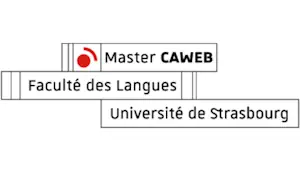Best Practice for Translation Management
Be better prepared and save time and money on your translation project. Implement and carry out the following steps for a smooth translation management with your vendor.
Any given project in a company needs preparation, that’s a given. Unlike with content creation, client consultation and many other parts of the process seem to be taking up most of our client’s time, leading to translation management are often forgotten in the planning process. And this is the part — usually the very last step before the release of the content or the launch of a product — where language service providers (LSP) come into play.
“Project X (which usually takes five weeks for translation) needs to be translated within one week.” “We took screenshots of our webpage and need the content to be translated asap.” “Could you please let us know the costs of this project from the past half year by this afternoon?” When working for a language service provider, these kinds of requests are part of your daily job.

Communication and planning are the key to a successful translation management
Whether the project is long-term or last-minute, there are certain items on a client’s checklist that need to be automatically ticked off for a smooth management of translation projects.
Contact person
Deisgnate one person of contact in charge of the project. They should know which stage of the translation project you are at, which queries still need to be answered or which budget restrictions you have. Copying your company’s stakeholders in on the mailing history from day one might be another alternative to keep everyone of importance in the picture, in case a third person needs to monitor the costs or if you are out of office for a few days.
Timing
When planning for a project, bear in mind that the translation process usually takes some time, too. Translators might not always be available right away. They might be working on other projects and certain languages are more requested than others. First, discuss the timing with your client, determine certain deadlines and make sure they understand that translation and proofreading take time. If you have a short turnaround time for your project, you should notify the language service provider a couple of weeks beforehand. Thus they can plan the project in advance, discuss timings with the translators and block them for the given period
With a very tight schedule, splitting the work between two or several vendors might be an option for you. Your translation or proofreading project arises last-minute? Then notify the LSP as soon as you can and send them a first draft of the text for an overview. Also, be specific with timings. Some clients say they “need the text back asap”. For some this means within the next hour, whereas others mean two days later. If, after notifying the LSP in advance, the deadlines change, keep the LSP updated. If they know they are going to receive the text one day later, they can reschedule their resources and come up with a back-up plan if necessary.
Content
Contrary to draft files for cost evaluations and notifications, it is crucial to send the right final files and deliverables. If you know that content might not be final, do not send it yet. Redoing certain parts of  the text over and over again slows the entire translation process down and it is more costly than working with the final version of the text. You are not sure whether all the content is going to be signed off by your client? Then discuss your concerns with the LSP and agree to send batches. It is also important to send the right format for the requested service. For projects where content has to be replaced by another language, send open files to the LSP. This allows them to work directly within the files rather than to try working with OCR in screenshots of videos or webpages, for example.
the text over and over again slows the entire translation process down and it is more costly than working with the final version of the text. You are not sure whether all the content is going to be signed off by your client? Then discuss your concerns with the LSP and agree to send batches. It is also important to send the right format for the requested service. For projects where content has to be replaced by another language, send open files to the LSP. This allows them to work directly within the files rather than to try working with OCR in screenshots of videos or webpages, for example.
Budget
To know costs for a project beforehand, it is always best to send draft files. Use last year’s annual report or material from a similar project if you do not have any content yet. It is obviously easier to estimate the complexity of a project with actual content in the prospective layout. A 12-page file could be 12 full pages of text or 12 powerpoint slides with only a third of textual content. The former would obviously be more time-consuming. If budget is vital to your translation project, keep track of costs. Ask the LSP to send costs for each batch they validate. Have them let you know how much of the targeted budget has already been used. It is always easier to send costs for a project while working on the preliminary steps, than weeks or months into the project.
As you might have noticed, communication is key. Send as much information as possible, let the LSP know about changes, carefully read emails and answer all queries. That way, there is no need to follow up and time is saved on both sides. Everything previously mentioned obviously cannot always be covered as LSP work in a fast-paced environment and the demands might change. However, meeting some of these expectations certainly simplifies the entire translation process and allows a smoother run of the project.
Find out more about how to build a healthy relationship with your language vendor.
Written by Melanie Wuchenaeur, TCLoc Master’s







